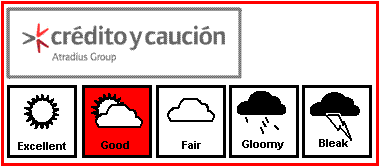| While most major European economies record only modest growth rates, Germanys recovery has gained momentum in the last couple of months. According to the German Statistics Office, GDP grew 2.2% in Q2 of 2010 on the previous quarter, driven mainly by investments in equipment and construction, increased consumer spending, and thriving exports - which increased 17.1% in the first half of the year. Exports to Brazil [+61.3%] and China [+55.5%] showed particularly high growth rates, while those to the Eurozone and the US increased by a still respectable 10.1% and 14,1% respectively. 
In the main, the export boom has benefited those sectors that had suffered a massive slump during the crisis, such as automotive and metals. Export of cars and car components alone increased 40.8% year-on-year in the first half of the year, while metal products exports rose 31.4%. In comparison, machinery exports rose only 6.8% in the same period but, according to the German Engineering Federation VDMA, high demand continues, with new domestic orders increasing 45% year-on-year in June and July, while new orders from abroad rose by a massive 56%. This rise in orders and turnover has heightened German companies financing requirements since the beginning of the year. In order to finance their increased business in advance and to bridge short-term liquidity gaps lingering after the downturn, companies have increasingly tended to rely on trade credit, either by agreement or simply by late payment. According to Crédito y Caución, the payment behaviour of German buyers has declined slightly over the last six months. More than half of German companies reported that their customers had delayed payment without prior agreement, a third had been asked for extended payment terms, and one in five respondents said that customers asked for an increase in the amount of credit. As rising capacity utilisation will increase businesses´ willingness to invest, demand for bank loans will no doubt increase accordingly. To meet that demand, it follows that access to bank finance should become easier and the signs are that it is. According to the monthly Ifo institute Credit Constraint Indicator, in September, barriers to finance again fell, indicating that in recent months it has become easier for German businesses to obtain bank loans. The KfW bank expects a turnaround of the credit market soon, such that, in Q4 of 2010, the volume of new business loans may rise again for the first time since the end of 2008. Moreover, a survey by the Bundesbank shows that the volume of business loans will increase over the next 12 months, especially for SMEs. A 5% decrease in corporate insolvencies next year The surprisingly good economic performance so far in 2010 manifested itself in a slowdown in rising insolvencies. According to the German Statistics Office, the number of corporate insolvencies still increased 6.7% year-on-year in Q1 of 2010, but for the first half of this year they rose just 2%. During that same period our experience is of a substantial decrease in the volume and number of payment defaults and of notifications of non-payment across all sectors. This, together with the good economic outlook, has allowed Crédito y Caución to revise forecast for insolvencies downwards, to 3-5% for 2010. For next year, the company expect a 5% decrease year-on-year. This positive development is also reflected in the Expected Default Frequency [EDF] indicator for listed companies in Germany. In August the EDF decreased to 48 basis points the lowest figure since the start of the worldwide credit crisis in September 2008. After its strong performance in the first half of the year, the German economy will probably lose some momentum. Global growth is expected to cool down to a degree in the coming months, which will lead to lower demand for German exports. In September, the consensus economics forecast GDP of the Atradius Group growth of 1.9% next year for Germany, following 3.2% in 2010. Potential risks for the German economy lie in a massive decline of world economic growth, especially in the US and China, and increased volatility of financial markets resulting from the public debt problems of some EU countries. However, it appears that private consumption, which grew 0.6% in Q2 of 2010 after weak performance in the previous nine months, will at last support economic growth. A lower jobless rate [7.5% in September], rising consumer sentiment and increasing purchasing power will trigger further private consumption growth in the coming months. This should lead to increasing turnover in the retail sector, which, after a longer period of weakness, should finally provide a substantial contribution to economic growth. |
